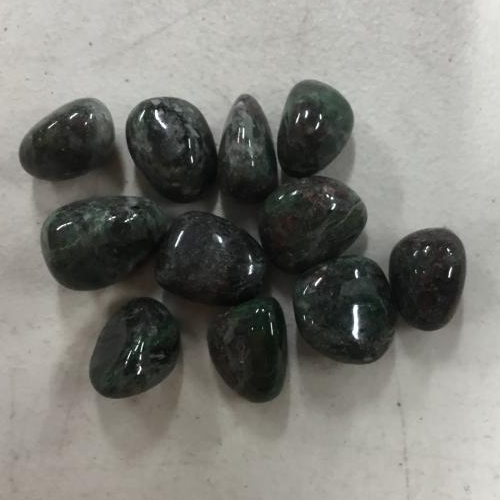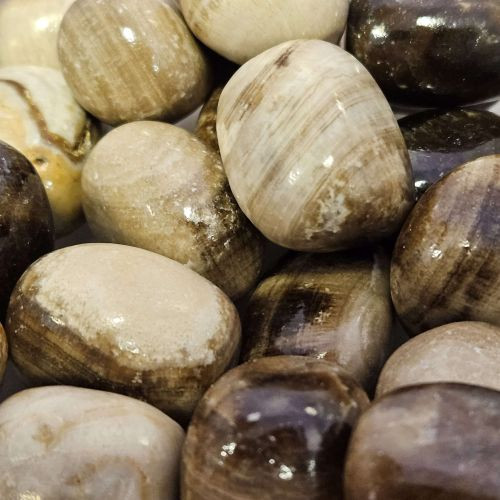Product Description
Shattuckite Tumbled Stone Grade A 1"
Mineral Information:
Shattuckite is a rare and highly valued copper silicate mineral that belongs to the silicate mineral group. It was named after the Shattuck Mine in Bisbee, Arizona, where it was first discovered. Here are some key aspects of Shattuckite:
-
Appearance: Shattuckite typically occurs as deep blue to greenish-blue masses or as tabular or prismatic crystals. It often exhibits a fibrous or botryoidal (grape-like) structure, with a vitreous to silky luster. Shattuckite can also show interesting patterns and banding, enhancing its aesthetic appeal.
-
Composition and Formation: Shattuckite is primarily composed of copper, silicon, and oxygen, with additional elements such as hydrogen, aluminum, and hydrogen. It forms in the oxidation zone of copper-rich ore deposits, often in association with other copper minerals like malachite, azurite, and chrysocolla.
Metaphysical Meaning:
Shattuckite is regarded as a stone of truth, communication, and spiritual alignment. It is believed to enhance psychic abilities, intuition, and channeling. Shattuckite is thought to promote clear and honest communication, helping individuals express their thoughts and feelings with clarity and confidence. It is also associated with spiritual growth, deepening meditation practices, and accessing higher realms of consciousness.
Mineral Care:
Shattuckite is considered to be a relatively soft mineral on the Mohs scale of mineral hardness, with a hardness rating of around 3.5 to 4. This means that it is softer compared to many other common gemstones and minerals. As a result, Shattuckite can be more susceptible to scratching, chipping, and breaking if not handled with care.
Here are a few factors to consider regarding the fragility of Shattuckite:
-
Softness: Shattuckite's softness makes it more prone to scratches, especially when it comes into contact with harder materials or surfaces. It is advisable to avoid placing Shattuckite jewelry or specimens alongside other harder gemstones or objects that could potentially cause abrasions or scratches.
-
Delicate Fibrous Structure: Shattuckite often forms in a fibrous or botryoidal structure, which can make it more vulnerable to damage. The fibrous nature of the mineral can result in weak points and fractures along its structure, increasing the risk of breakage or chipping if subjected to impact or pressure.
-
Sensitivity to Pressure: Shattuckite should be handled with care and not subjected to excessive pressure or force. Squeezing, dropping, or banging Shattuckite specimens or jewelry items can potentially cause them to crack or break.
To preserve the integrity of Shattuckite and minimize the risk of damage, it is recommended to follow these guidelines:
-
Gentle Handling: Handle Shattuckite specimens or jewelry items with care, avoiding unnecessary force or pressure. Hold them gently and avoid dropping or knocking them against hard surfaces.
-
Protective Storage: When not in use, store Shattuckite jewelry or specimens in a secure and cushioned container to prevent accidental impacts or exposure to other harder materials. Consider wrapping them in soft fabric or placing them in a padded jewelry box to minimize the risk of scratches or breakage.
-
Avoid Chemicals: Shattuckite should be protected from exposure to harsh chemicals or cleaning agents that could potentially damage or alter its appearance. It is advisable to remove Shattuckite jewelry before engaging in activities involving chemicals, such as cleaning or swimming.
By handling Shattuckite with caution and taking necessary precautions to protect it from scratches, impacts, and harsh chemicals, you can help preserve its beauty and integrity for a longer period.
Disclaimer:
No information here is intended to diagnose, treat or cure ailments or afflictions of any kind. One should always consult a medical professional if a serious issue presents itself.










